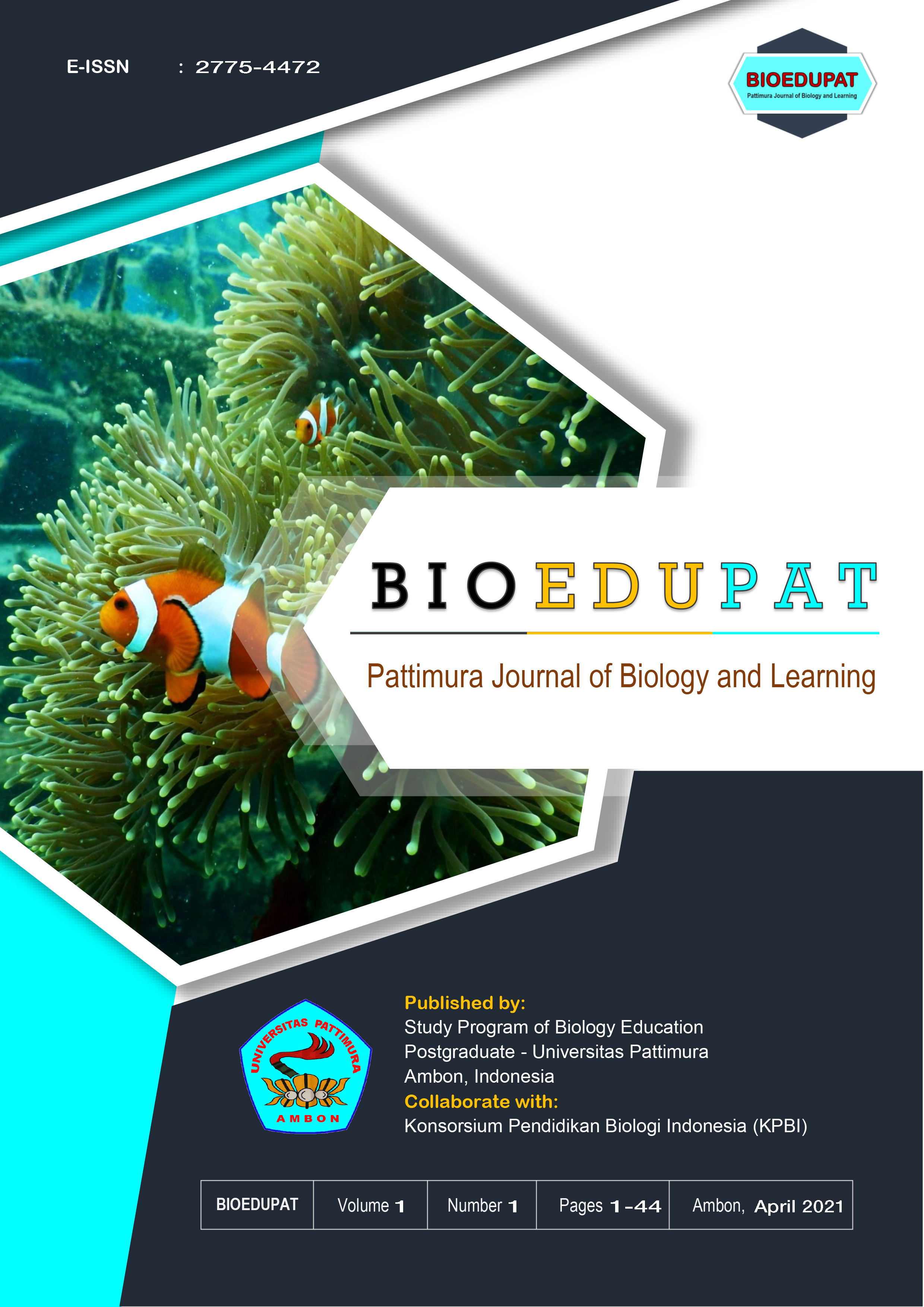Decreasing SGPT level and macrophage activity through CD68 expression in the Balb/c mice (Mus musculus) liver infected with Salmonella typhi after treating with atung seeds (Parinarium glaberimmun Hassk)
Abstract
Normally macrophages are always in the body and spread in various body tissues such as liver tissue (Kupffer cells). Macrophages in tissue can be identified by the expression of several markers, in humans the marker is CD68. The increase and decrease in macrophage activity in the liver can also be indicated by an increase in SGPT levels so that atung seeds have the ability to inhibit the growth of S. tyhpi bacteria which contain tannin compounds which can damage microbial cell walls and form bonds with microbial functional proteins so that bacterial growth is inhibited. The purpose of this study was to determine the SGPT levels and macrophage activity. The method used is laboratory experiment. The results showed an increase in SGPT levels in the positive control (87.00 ± 2,915) and a concentration of 25% (84.20 ± 3,962) and a decrease in SGPT levels in the negative control (50.80 ± 2.168 *), 50% concentration (78.20 ± 3.114 *) and concentrations. 75% (58.20 ± 3,834), decreased macrophage activity in the liver also occurred at a concentration of 50% and at a concentration of 75%, the liver was normal, which was indicated by the resulting brown expression
Downloads
References
Adawiyah, D. R. (1998). Studi pengembangan metode ekstraksi komponen antimikroba biji buah atung (Parinarium glaberrimum Hassk) [Study on the development of antimicrobial component extraction methods of atung fruit seeds (Parinarium glaberrimum Hassk)]. S2 thesis. PPs. IPB: Bogor. (In Indonesian)
Baratawidjaja, K. G., & Rengganis, I. (2010). Imunologi Dasar [Basic Immunology]. 9th ed. BP FKUI, Jakarta:. (In Indonesian)
Betjes, M. G., Haks, M. C., & Tuk, C. W. (1991). Monoclonal antibody EBM11 (anti-CD68) discriminates between dendritic cells and macrophages after short-term culture. Immunobiology, 183, 79–87. doi: https://doi.org/10.1016/S0171-2985(11)80187-7
Brooks, E., Simmons-Arnold, L., & Naud, S. (2009). Multinucleated giant cells’ incidence, immune markers, and significance: a study of 172 cases of papillary thyroid carcinoma. Head and Neck Pathology, 3, 95–99. doi: https://doi.org/10.1007/s12105-009-0110-9
Chanana, V., Ray, P., Rishi, D. B., & Rishi, P. (2007). Reactive nitrogen intermediates and monokines induce caspase-3 mediated macrophage apoptosis by anaerobically stressed Salmonella typhi. Clinical & Experimental Immunology. 150(2): 368-374. doi: https://doi.org/10.1111/j.1365-2249.2007.03503.x
Cowan, M. M. (1999). Plant products as antimicrobial agents. Clinical Microbiology Reviews, 12, 564-582.
Ferenbach, D., & Hughes, J. (2008). Macrophages and dendritic cells: what is the difference?. Kidney International, 74, 5–7. doi: https://doi.org/10.1038/ki.2008.189
Forbes, B. A., Sahm, D. F., & Weissfeld, A. S. (2007). Bailey and Scott's Diagnostic Microbiology. 12th ed. Missouri: Mosby.
Franca, A. C. H., Eduardo, L. F., Joanna, C. M., Valeria, C. C., Uender, C. R. P., & Claudemir, B. (2010) Immunomodulatory effects of herbal plants plus melatonin on human blood phagocytes. International Journal of Phytomedicine, 2, 354–62. doi: https://doi.org/10.5138/ijpm.2010.0975.0185.02050
Holness, C. L., da Silva, R. P., Fawcett, J., Gordon, S., & Simmons, D. L. (1993). Mac-rosialin, a mouse macrophage-restricted glycoprotein, is a member of the lamp ℠lgp family. Journal of Biological Chemistry, 268, 961–966.
Kee., & Lefever, J. (2014). Pedoman pemeriksaan laboratorium dan diagnostik [Laboratory and Diagnostic Examination Guidelines]. Edition 6. EGC, Jakarta.
Kosasih, E. N., & Kosasih, A. S. (2008). Tafsiran hasil pemeriksaan laboratorium klinik [Interpretation of Clinical Laboratory Examination Results]. Karisma Publishing Group, Tangerang.
Lee, J. H., Park, J. H., Cho, H. S., Joo, S. W., Cho, M. H., & Lee, J. (2013). Anti-biofilm activities of quercetin and tannic acid against Staphylococcus aureus. Biofouling, 29(5), 491-499.
Meyer, S. L. F., Lakshman, D. K., Zasada, I. A., Vinyard, B. T., & Chitwod, D. J. (2008). Dose response effects of clove oil from Syzygium aromaticum on the root-knot nematode Meloidogye incognita. Pest Management Science, 64, 223-229. doi: https://doi.org/10.1002/ps.1502
Nah, S. S., Choi, I. Y., Lee, C. K., Oh, J. S., Kim, Y. G., Moon, H. B., & Yoo. (2008). Effects of advanced glycation and products on the expression of COX2, PGE2 and no in human osteoarthritic chondrocytes. The Journal of Rheumatology, 47, 425-431. doi: https://doi.org/10.1093/rheumatology/kem376
Nucera, S., Biziato, D., & Palma, M. D. (2010). The interplay between macrophages and angiogenesis in development tissue injury and regeneration. The International Journal of Developmental Biology, 55, 495-503. doi: https://doi.org/10.1387/ijdb.103227sn
O'Reilly, D., & Greaves, D. R. 2007. Cell-type-specific expression of the human CD68 gene is associated with changes in Pol II phosphorylation and short-range intrachromosomal gene looping. Genomics, 90: 407–415. doi: https://doi.org/10.1016/j.ygeno.2007.04.010
O'Reilly, D., Quinn, C. M., & El-Shanawany, T. (2003). Multiple ets factors and interferon regulatory factor-4 modulate CD68 expression in a cell type-specific manner. Journal of Biological Chemistry, 278, 21909–21919. doi: https://doi.org/10.1074/jbc.M212150200.
Ramprasad, M. P., Terpstra, V., & Kondratenko, N. (1996). Cell surface expression of mouse macrosialin and human CD68 and their role as macrophage receptors for oxidized low density lipoprotein. Proceedings of the National Academy of Sciences, 93, 14833–14838. doi: https://doi.org/10.1073/pnas.93.25.14833
Sadikin, M. (2002). Biokimia enzim [Enzyme biochemistry]. Widya medika, Jakarta. (In Indonesian).
Saito, G., Swanson, J. A., & Lee, K. D. (2003). Drug delivery strategy utilizing conjugation via reversible disulfide linkages: role and site of cellular reducing activities. Advanced drug delivery reviews, 55(2), 199-215.
Samaranayake, L. 2012. Essential Microbiology for Dentistry. 4rd ed. Elsevier, Hongkong. pp. 100-115.
Sari, F. P., Sari, S. M. (2011). Ekstraksi zat aktif antimikroba dari tanaman yodium (Jatropha multifida Linn) sebagai bahan baku alternatif antibiotik alami [Extraction of antimicrobial active substances from iodine plants (Jatropha multifida Linn) as alternative raw materials for natural antibiotics]. Fakultas Teknik Universitas Diponegoro: Semarang. (In Indonesian).
Sudira, I. W., Merdana, I., & Wibawa, I. (2011). Uji daya hambat ekstrak daun kedondong (Lannea grandis Engl) terhadap pertumbuhan bakteri erwinia carotovora [Inhibition test of kedondong leaf extract (Lannea grandis Engl) on the growth of the bacteria Erwinia carotovora]. Buletin Veteriner Udayana, 3(1), 45-50. (In Indonesian).
Tursinawati, Y., & Dharmana, E. (2015). Efektivitas pemberian kombinasi produk herbal antibiotik terhadap infeksi Salmonella typhimurium pada mencit Balb/c. University Research Coloquium, (2), 231-237.
Tsukamoto, K., Kinoshita, M., & Kojima, K. (2002). Synergically increased expression of CD36, CLA-1 and CD68, but not of SR-A and LOX-1, with the progression to foam cells from macrophages. Journal of Atherosclerosis and Thrombosis, 9, 57–64. doi: https://doi.org/10.5551/jat.9.57
Widyastuti, R. (2016). Hubungan kadar SGPT (Serum Glutamic Pyruvic Transminase) dengan titer widal antigen O Salmonella tyhpi pada penderita demam typhoid [Relationship between SGPT (Serum Glutamic Pyruvic Transminase) levels with Salmonella tyhpi widal antigen O titer in typhoid fever patients]. The Journal of Muhammadiyah Laboratory Technologist, 2(1), 43- 53. (In Indonesian).
Yoshida, H., Quehenberger, O., & Kondratenko, N. (1998). Minimally oxidized low-density lipoprotein increases expression of scavenger receptor A, CD36, and macrosialin in resident mouse peritoneal macrophages. Arteriosclerosis, Thrombosis, and Vascular Biology, 18, 794–802. doi: https://doi.org/10.1161/01.atv.18.5.794
Copyright (c) 2021 Eifan Boyke Pattiasina, Pieter Kakisina, Ferymon Mahulette

This work is licensed under a Creative Commons Attribution-NonCommercial-ShareAlike 4.0 International License.
Authors who publish with BIOEDUPAT: Pattimura Journal of Biology and Learning agree to the following terms:
- Authors retain copyright and grant the journal right of first publication with the work simultaneously licensed under a Creative Commons Attribution License (CC BY-NC-SA 4.0) that allows others to share the work with an acknowledgment of the work's authorship and initial publication in this journal.
- Authors are able to enter into separate, additional contractual arrangements for the non-exclusive distribution of the journal's published version of the work (e.g., post it to an institutional repository or publish it in a book), with an acknowledgment of its initial publication in this journal.
- Authors are permitted and encouraged to post their work online (e.g., in institutional repositories or on their website) prior to and during the submission process, as it can lead to productive exchanges, as well as earlier and greater citation of published work.









 This work is licensed under a
This work is licensed under a 